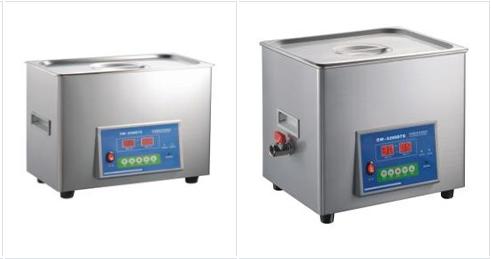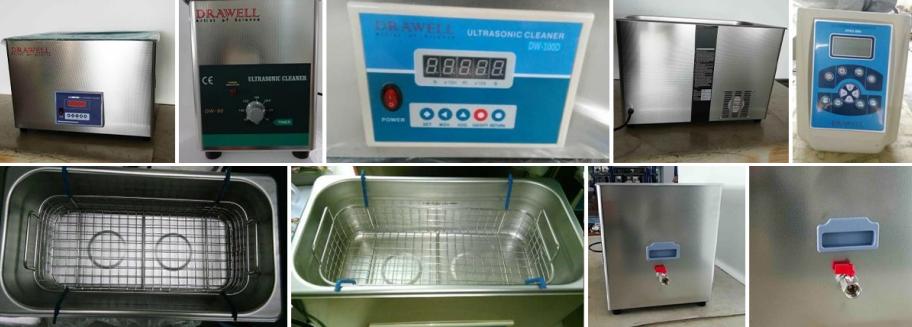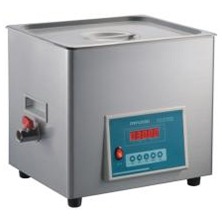When it comes to precision cleaning, whether in the automotive industry, medical field, or jewelry trade, Ultrasonic Cleaning Machines have emerged as a vital tool. These remarkable devices use high-frequency sound waves to achieve cleaning levels that traditional methods can seldom match. In this article, we’ll dive into the workings of Ultrasonic Cleaning Machines, exploring their science and the diverse range of items they can effectively clean.

How does an Ultrasonic Cleaning Machine Work?
To comprehend the magic of Ultrasonic Cleaning Machines, one must grasp the science underpinning their operation. At the heart of these machines are transducers, devices that convert electrical energy into high-frequency sound waves, usually beyond the range of human hearing. These sound waves are emitted into a liquid solution, creating countless microscopic bubbles through a process known as cavitation.
Cavitation: The Cleaning Powerhouse
Cavitation is the key to understanding how Ultrasonic Cleaning Machines work. As high-frequency sound waves propagate through the cleaning solution, they create alternating high and low-pressure cycles. During the low-pressure phases, tiny vapor-filled bubbles form in the liquid. These bubbles continue to grow during the low-pressure phase until they can no longer maintain their integrity.
When the pressure suddenly increases during the high-pressure phase, the bubbles implode violently. This implosion generates shockwaves and microjets in the liquid. It’s this extreme localized energy that dislodges and removes contaminants from the surfaces of items being cleaned.

What Can an Ultrasonic Cleaning Machine Clean?
Ultrasonic Cleaning Machines are versatile tools that can effectively clean a wide array of items and materials. Here’s a glimpse of what they can tackle:
- Jewelry: Ultrasonic Cleaning Machines are a jeweler’s best friend. They can gently yet thoroughly clean intricate pieces, removing dirt, oils, and tarnish from rings, necklaces, earrings, and watches.
- Medical Instruments: In the medical field, cleanliness is paramount. Ultrasonic cleaners effectively sterilize and clean surgical instruments, dental tools, and even delicate medical implants.
- Electronics: The sensitive components of electronics, including circuit boards and small parts, can be thoroughly cleaned without damage using ultrasonic technology. Flux residues and contaminants are effortlessly removed.
- Automotive Parts: From carburetors and fuel injectors to engine components and even entire engine blocks, Ultrasonic Cleaning Machines excel at removing oil, grease, and carbon deposits from automotive parts.
- Firearms: Gun enthusiasts and gunsmiths rely on ultrasonic cleaners to restore firearm components. They efficiently remove fouling, gunpowder residues, and oils, maintaining firearm performance.
- Optical Equipment: Optical shops and manufacturers use ultrasonic cleaners to remove dirt, oils, and smudges from eyeglass frames and lenses, ensuring crystal-clear vision.
- Collectibles and Coins: Numismatists and collectors trust ultrasonic cleaners to safely clean coins, medals, and various collectibles without compromising their value.
- Laboratory Glassware: Laboratories use ultrasonic cleaners to clean glassware, beakers, test tubes, and other scientific instruments, ensuring they are pristine for accurate experimentation.
- Hobby and Craft Items: Hobbyists and crafters find value in ultrasonic cleaners for cleaning miniature figurines, model parts, and other hobby-related items.
- Industrial Components: In industries like aerospace and manufacturing, ultrasonic cleaning is a staple for maintaining and cleaning industrial tools, precision parts, and more.
- Watches: Watchmakers employ ultrasonic cleaners to clean the delicate movements of mechanical watches, removing tiny particles and old lubricants.
- Musical Instruments: Brass and woodwind instruments, such as trumpets and clarinets, benefit from ultrasonic cleaning to remove oils and grime from intricate parts.
- Print Circuit Boards (PCBs): Electronics manufacturers rely on ultrasonic cleaning to clean PCBs before assembly, ensuring the removal of contaminants and residues.
- Surgical Instruments: Hospitals and medical facilities use ultrasonic cleaners to sterilize and clean surgical instruments thoroughly, a crucial step in preventing infections.
- Rust and Corrosion Removal: Ultrasonic Cleaning Machines are effective at removing rust and corrosion from metal surfaces, making them valuable in restoration and maintenance tasks.
- Stain and Odor Removal: Specialized cleaning powders and solutions can be used with ultrasonic cleaners to remove stubborn stains and odors from items like dentures, baby bottles, or pet accessories.

Conclusion
In the world of cleaning technology, Ultrasonic Cleaning Machines stand out as versatile workhorses. Their ability to harness the power of cavitation allows them to clean a vast range of items and materials effectively and efficiently. From jewelry to surgical instruments, from automotive parts to delicate electronics, these machines have found their place in numerous industries, revolutionizing the way we maintain and restore the things that matter most. Whether you’re a jeweler, a gunsmith, a lab technician, or a hobbyist, the Ultrasonic Cleaning Machine has undoubtedly become an indispensable tool in your arsenal.

